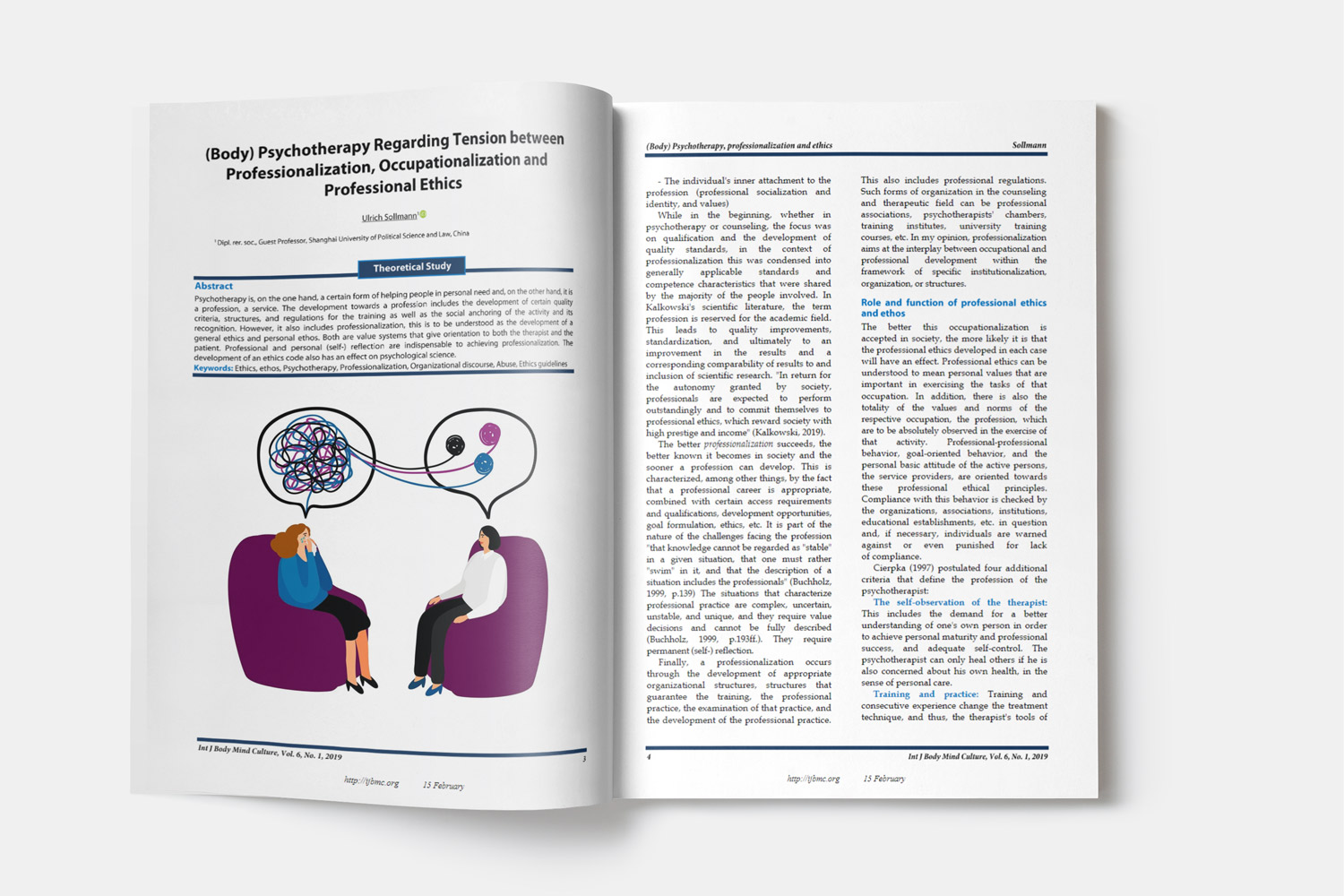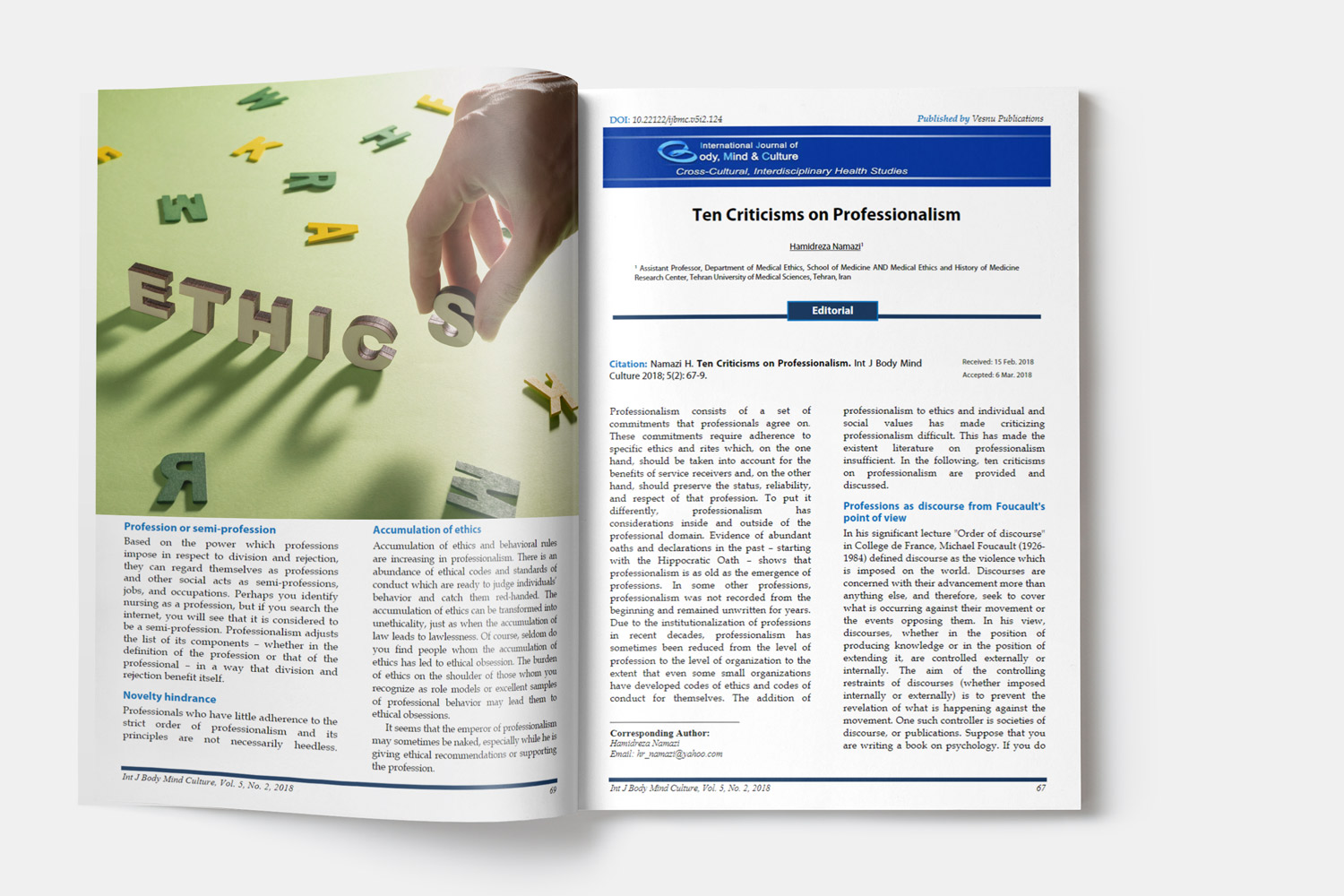Comparison of Stress Profiles among Individuals with and without Functional Dyspepsia
Downloads
Background: Functional dyspepsia (FD) is defined as the presence of dyspeptic symptoms in the absence of an organic cause that readily explains them. Life stressors, individuals' perceptions, their coping responses, and social supports are linked and can affect the well-being of individuals. The aim of the current study was to assess the relationship between FD and life stressors, coping strategies, and social support.
Methods: In a cross-sectional study conducted in Isfahan Province, Iran, in 2013, the employees of Isfahan University of Medical Sciences, Isfahan, were evaluated. Symptoms of FD were measured using the modified ROME III questionnaire. The Stressful Life Event (SLE) Questionnaire, modified COPE scale, and Multidimensional Scale of Perceived Social Support (MSPSS) were used for assessing life stressors, coping strategies, and social support. Logistic regression analysis was applied to assess the crude and adjusted effects of each variable on FD.
Results: About 55.8% of participants were women and 79.3% were married. In total, 723 (15.2%) participants had FD, 457 (63.2%) of whom were women. The mean scores of perceived intensity and frequencies of all life stressors were significantly higher in patients with FD (P < 0.05). In addition, the mean score of social support in patients with FD was significantly lower (P < 0.05). Logistic regression analyses demonstrated that the frequency of stressors and perceived intensity of stressors were significantly associated with FD (OR = 1.08 and 1.025, respectively). Moreover, the acceptance coping strategy had a significant relationship with FD (OR = 0.85, 95% CI, 0.75-0.95). Among the socio-demographic factors, sex (OR = 1.65, 95% CI, 1.3-2.1) and education (OR = 0.6, 95% CI, 0.5-0.8) demonstrated significant relationships with FD.
Conclusions: FD was more common in those individuals who had a higher rate of stressors and lower social support.
Downloads
Adibi, P., Hassanzadeh Keshteli, A., Esmaillzadeh, A., Afshar, H., Roohafza, H., & Bagherian-Sararoudi, R. (2012). The study on the epidemiology of psychological, alimentary health and nutrition (SEPAHAN): Overview of methodology. J Res Med Sci, 17(Spec 2), S291-S297.
Alemi, F., Stephens, R., Llorens, S., Schaefer, D., Nemes, S., & Arendt, R. (2003). The Orientation of Social Support measure. Addict.Behav, 28(7), 1285-1298. doi:S0306460302002514 [pii]. Retrieved from PM:12915169
Amini, E., Keshteli, A. H., Jazi, M. S., Jahangiri, P., & Adibi, P. (2012). Dyspepsia in Iran: SEPAHAN Systematic Review No. 3. Int J Prev Med, 3(Suppl 1), S18-S25. Retrieved from PM:22826763
Bagherian-Sararoudi, R., Hajian, A., Ehsan, H. B., Sarafraz, M. R., & Zimet, G. D. (2013). Psychometric properties of the Persian version of the multidimensional scale of perceived social support in iran. Int J Prev Med, 4(11), 1277-1281. Retrieved from PM:24404362
Bennett, E. J., Piesse, C., Palmer, K., Badcock, C. A., Tennant, C. C., & Kellow, J. E. (1998). Functional gastrointestinal disorders: psychological, social, and somatic features. Gut, 42(3), 414-420. Retrieved from PM:9577351
Carver, C. S., Scheier, M. F., & Weintraub, J. K. (1989). Assessing coping strategies: a theoretically based approach. J Pers Soc Psychol, 56(2), 267-283. Retrieved from PM:2926629
Chang, L. (2004). Review article: epidemiology and quality of life in functional gastrointestinal disorders. Aliment.Pharmacol Ther, 20(Suppl 7), 31-39. doi:APT2183 [pii];10.1111/j.1365-2036.2004.02183.x [doi]. Retrieved from PM:15521853
Cheng, C., Hui, W. M., & Lam, S. K. (1999). Coping style of individuals with functional dyspepsia. Psychosom.Med, 61(6), 789-795. Retrieved from PM:10593630
Cheng, C., Hui, W. M., & Lam, S. K. (2002). Coping with first-time endoscopy for a select sample of Chinese patients with functional dyspepsia and duodenal ulcer: an observational study. Psychosom.Med, 64(6), 867-873. Retrieved from PM:12461191
Cheng, C., Yang, F. C., Jun, S., & Hutton, J. M. (2007). Flexible coping psychotherapy for functional dyspeptic patients: a randomized, controlled trial. Psychosom.Med, 69(1), 81-88.
doi:01.psy.0000249734.99065.6f [pii];10.1097/01.psy.0000249734.99065.6f [doi]. Retrieved from PM:17167126
De la Roca-Chiapas JM, Solis-Ortiz, S., Fajardo-Araujo, M., Sosa, M., Cordova-Fraga, T., & Rosa-Zarate, A. (2010). Stress profile, coping style, anxiety, depression, and gastric emptying as predictors of functional dyspepsia: a case-control study. J Psychosom.Res, 68(1), 73-81. doi:S0022-3999(09)00192-5 [pii];10.1016/j.jpsychores.2009.05.013 [doi]. Retrieved from PM:20004303
Drossman, D. A., Creed, F. H., Olden, K. W., Svedlund, J., Toner, B. B., & Whitehead, W. E. (1999). Psychosocial aspects of the functional gastrointestinal disorders. Gut, 45(Suppl 2), II25-II30. Retrieved from PM:10457041
Drossman, D. A. (2006). The functional gastrointestinal disorders and the Rome III process. Gastroenterology, 130(5), 1377-1390. doi:S0016-5085(06)00503-8 [pii];10.1053/j.gastro.2006.03.008 [doi]. Retrieved from PM:16678553
Drossman, D. A. (2006). The functional gastrointestinal disorders and the Rome III process. Gastroenterology, 130(5), 1377-1390. doi:S0016-5085(06)00503-8 [pii];10.1053/j.gastro.2006.03.008 [doi]. Retrieved from PM:16678553
Drossman, D. A., & Dumitrascu, D. L. (2006). Rome III: New standard for functional gastrointestinal disorders. J Gastrointestin.Liver Dis, 15(3), 237-241. doi:5 [pii]. Retrieved from PM:17013448
Drossman, D. A., Corazziari, E., Delvaux, M., Spiller, R., Talley, N. J., Thompson, W. G. et al. (2010). Appendix B: Rome III diagnostic criteria for functional gastrointestinal disorders. Rev Gastroenterol Mex, 75(4), 511-516.
Filipovic, B. F., Randjelovic, T., Ille, T., Markovic, O., Milovanovic, B., Kovacevic, N. et al. (2013). Anxiety, personality traits and quality of life in functional dyspepsia-suffering patients. Eur J Intern.Med, 24(1), 83-86. doi:S0953-6205(12)00175-6 [pii];10.1016/j.ejim.2012.06.017 [doi]. Retrieved from PM:22857883
Folkman, S., Lazarus, R. S., Gruen, R. J., & DeLongis, A. (1986). Appraisal, coping, health status, and psychological symptoms. J Pers Soc Psychol, 50(3), 571-579. Retrieved from PM:3701593
Grassi, L., Rasconi, G., Pedriali, A., Corridoni, A., & Bevilacqua, M. (2000). Social support and psychological distress in primary care attenders. Ferrara SIMG Group. Psychother.Psychosom., 69(2), 95-100. doi:12372 [pii];12372 [doi]. Retrieved from PM:10671830
Grzyb, J., Wrzesiniska, M., Harasiuk, A., Chojnacki, C., & Kocur, J. (2007). The assessment of selected personality traits, coping and melatonin nocturnal secretion in patients with functional dyspepsia. Psychiatr.Pol, 41(3), 401-410. Retrieved from PM:17900055
Haug, T. T. (2002). Functional dyspepsia--a psychosomatic disease. Tidsskr.Nor.Laegeforen., 122(12), 1218-1222. Retrieved from PM:12089851
Hefner, J., & Eisenberg, D. (2009). Social support and mental health among college students. Am J Orthopsychiatry, 79(4), 491-499. doi:2010-01179-008 [pii];10.1037/a0016918 [doi]. Retrieved from PM:20099940
Karukivi, M., Joukamaa, M., Hautala, L., Kaleva, O., Haapasalo-Pesu, K. M., Liuksila, P. R. et al. (2011). Does perceived social support and parental attitude relate to alexithymia? A study in Finnish late adolescents. Psychiatry Res, 187(1-2), 254-260. doi:S0165-1781(10)00720-1 [pii];10.1016/j.psychres.2010.11.028 [doi]. Retrieved from PM:21185086
Koloski, N. A., Jones, M., Kalantar, J., Weltman, M., Zaguirre, J., & Talley, N. J. (2012). The brain--gut pathway in functional gastrointestinal disorders is bidirectional: a 12-year prospective population-based study. Gut, 61(9), 1284-1290. doi:gutjnl-2011-300474 [pii];10.1136/gutjnl-2011-300474 [doi]. Retrieved from PM:22234979
Li, Y., Nie, Y., Sha, W., & Su, H. (2002). The link between psychosocial factors and functional dyspepsia: an epidemiological study. Chin Med J (Engl), 115(7), 1082-1084. Retrieved from PM:12173597
Miller, S. M., Brody, D. S., & Summerton, J. (1988). Styles of coping with threat: implications for health. J Pers Soc Psychol, 54(1), 142-148. Retrieved from PM:3346803
Pajala, M., Heikkinen, M., & Hintikka, J. (2012). Association between mental distress, gastrointestinal symptoms, and health-care utilization in functional dyspepsia: a prospective 7-year follow-up study. Scand J Gastroenterol, 47(4), 407-413. doi:10.3109/00365521.2011.650193 [doi]. Retrieved from PM:22229887
Park, H. (2011). Functional gastrointestinal disorders and overlap syndrome in Korea. J Gastroenterol Hepatol., 26(Suppl 3), 12-14. doi:10.1111/j.1440-1746.2011.06644.x [doi]. Retrieved from PM:21443700
Perez, M. E., & Youssef, N. N. (2007). Dyspepsia in childhood and adolescence: insights and treatment considerations. Curr Gastroenterol Rep, 9(6), 447-455. Retrieved from PM:18377794
Polman, R., Borkoles, E., & Nicholls, A. R. (2010). Type D personality, stress, and symptoms of burnout: the influence of avoidance coping and social support. Br J Health Psychol, 15(Pt 3), 681-696. doi:bjhp722 [pii];10.1348/135910709X479069 [doi]. Retrieved from PM:19930789
Quartero, A. O., Post, M. W., Numans, M. E., de Melker, R. A., & de Wit, N. J. (1999). What makes the dyspeptic patient feel ill? A cross sectional survey of functional health status, Helicobacter pylori infection, and psychological distress in dyspeptic patients in general practice. Gut, 45(1), 15-19. Retrieved from PM:10369698
Rabinovitch, M., Cassidy, C., Schmitz, N., Joober, R., & Malla, A. (2013). The influence of perceived social support on medication adherence in first-episode psychosis. Can.J Psychiatry, 58(1), 59-65. Retrieved from PM:23327758
Richter, J. E. (1991). Stress and psychologic and environmental factors in functional dyspepsia. Scand J Gastroenterol Suppl., 182, 40-46. Retrieved from PM:1896829
Roohafza, H., Ramezani, M., Sadeghi, M., Shahnam, M., Zolfagari, B., & Sarafzadegan, N. (2011). Development and validation of the stressful life event questionnaire. Int J Public Health, 56(4), 441-448. doi:10.1007/s00038-011-0232-1 [doi]. Retrieved from PM:21327856
Roohafza, H. R., Afshar, H., Keshteli, A. H., Mohammadi, N., Feizi, A., Taslimi, M. et al. (2014). What's the role of perceived social support and coping styles in depression and anxiety? J Res Med Sci, 19(10), 944-949. Retrieved from PM:25538777
Sali, R., Roohafza, H., Sadeghi, M., Andalib, E., Shavandi, H., & Sarrafzadegan, N. (2013). Validation of the revised stressful life event questionnaire using a hybrid model of genetic algorithm and artificial neural networks. Comput Math Methods Med, 2013, 601640. doi:10.1155/2013/601640 [doi]. Retrieved from PM:23476715
Song, K. H., Jung, H. K., Min, B. H., Youn, Y. H., Choi, K. D., Keum, B. R. et al. (2013). Development and Validation of the Korean Rome III Questionnaire for Diagnosis of Functional Gastrointestinal Disorders. J Neurogastroenterol.Motil., 19(4), 509-515. doi:10.5056/jnm.2013.19.4.509 [doi]. Retrieved from PM:24199012
Vege, S. S., Locke, G. R., III, Weaver, A. L., Farmer, S. A., Melton, L. J., III, & Talley, N. J. (2004). Functional gastrointestinal disorders among people with sleep disturbances: a population-based study. Mayo.Clin Proc, 79(12), 1501-1506. doi:S0025-6196(11)61854-5 [pii];10.4065/79.12.1501 [doi]. Retrieved from PM:15595333
Whitehead, W. E. (1996). Psychosocial aspects of functional gastrointestinal disorders. Gastroenterol Clin North Am, 25(1), 21-34. Retrieved from PM:8682574
Wrzesinska, M. A., & Kocur, J. (2008). The assessment of personality traits and coping style level among the patients with functional dyspepsia and irritable bowel syndrome. Psychiatr.Pol, 42(5), 709-717. Retrieved from PM:19445354
Zimet, G. D., Powell, S. S., Farley, G. K., Werkman, S., & Berkoff, K. A. (1990). Psychometric characteristics of the Multidimensional Scale of Perceived Social Support. J Pers Assess, 55(3-4), 610-617. doi:10.1080/00223891.1990.9674095 [doi]. Retrieved from PM:2280326
Copyright (c) 2016 International Journal of Body, Mind and Culture

This work is licensed under a Creative Commons Attribution-NonCommercial 4.0 International License.















